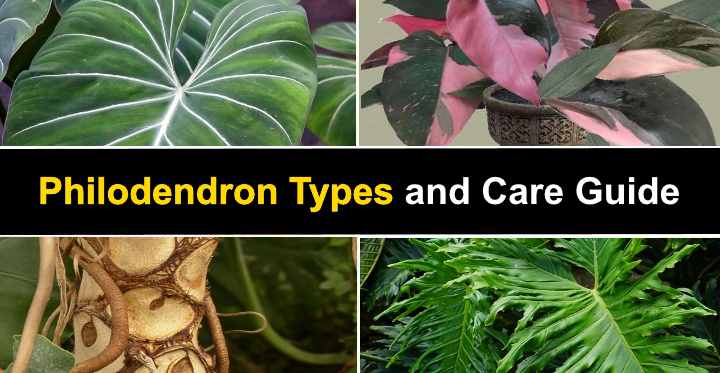Philodendron plants, which belong to the Araceae family, are tropical flowering plants with large green leaves that make them popular houseplants. They come in various species, some of which have climbing vines and are perfect for hanging baskets, while others have wide or deeply-lobed leaves that grow upright. This makes it easy to find a Philodendron plant that will suit your taste and interior décor.
The most popular types of Philodendron plants include the velvet-leaf plant, the Brasil Philodendron cultivar, the Pink Princess, and the rare Philodendron White Knight with dark green and white variegated leaves.
To care for Philodendron plants, it’s essential to provide them with well-draining soil, a bright indoor location, and water when the top 1″ (2.5 cm) of soil is dry. These tropical plants thrive in high humidity and temperatures of 65°F to 80°F (18°C to 27°C). During the growing season, fertilize once a month and prune in the spring.
Upright Philodendrons vs. Climbing or Hanging Philodendrons (Philodendron Vine)
Philodendron plants come in two main varieties: vining and upright. Vining Philodendrons are perfect for those who want to add a vertical touch to their indoor decor with their heart-shaped leaves and lengthy trailing vines. These plants can be hung from the ceiling in a basket or placed on a high shelf to accentuate their stunning long stems. Popular vining Philodendron types include the variegated ‘Brasil,’ ‘Pink Princess,’ and green heartleaf Philodendron.
On the other hand, upright Philodendrons have large, split leaves that may be too large to support themselves. They are slow-growing compared to vining Philodendrons. Some popular types of upright Philodendrons include Xanadu and Green Congo Philodendron.
Regardless of the variety, Philodendrons require well-draining soil, bright indoor locations, and water when the top inch of soil is dry. They prefer high humidity and temperatures between 65°F to 80°F (18°C to 27°C) and should be fertilized once a month during the growing season. Pruning is recommended in the spring.
Types of Philodendrons (With Pictures and Common Names)
Let’s explore the various types of Philodendron plants that are appropriate for homes, workplaces, and other indoor settings in further depth. Scientific names will help identify each species of Philodendron, in addition to the plant descriptions and pictures.
Green Heartleaf Philodendron (Philodendron hederaceum)
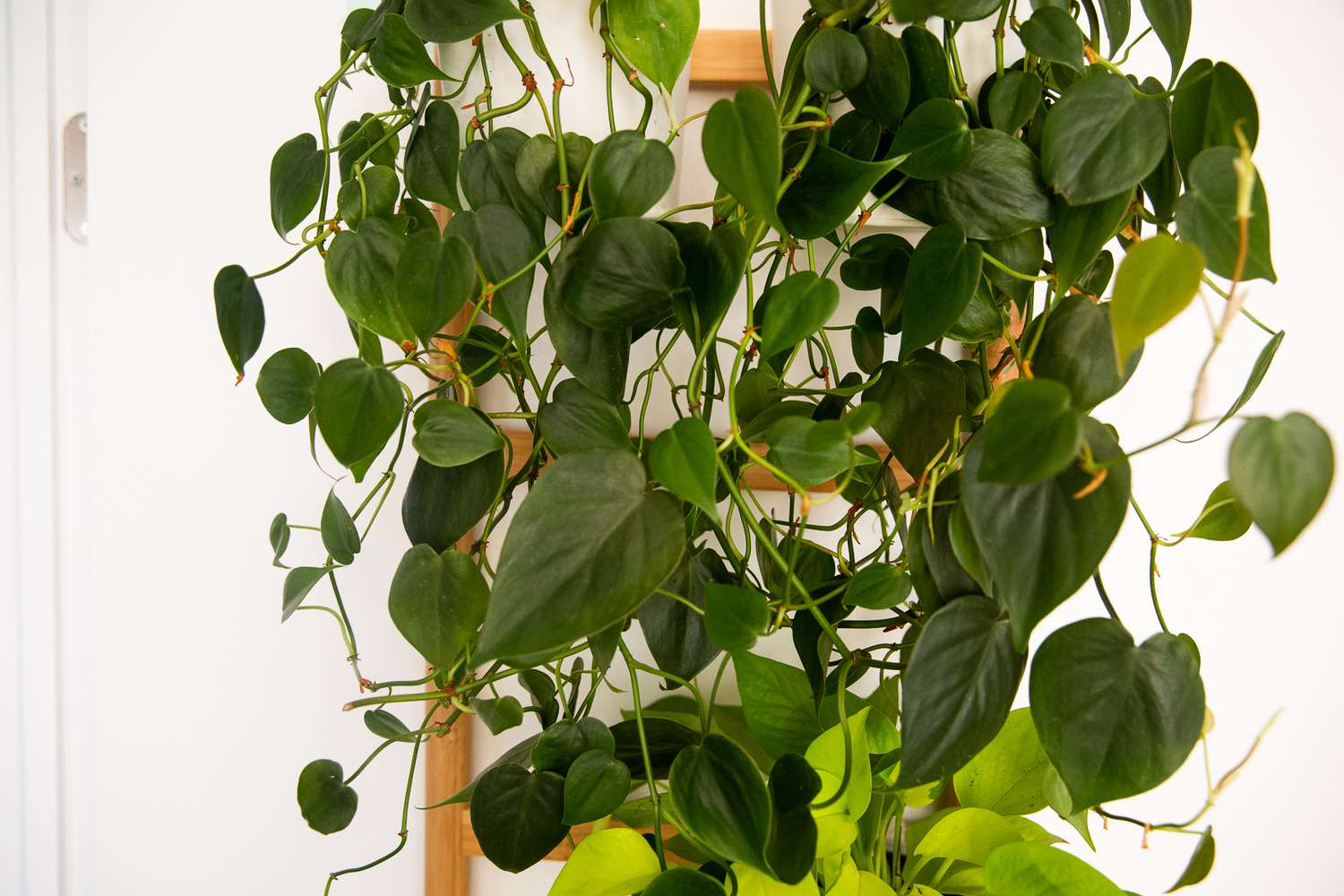
Philodendron hederaceum, also known as Heartleaf Philodendron or Sweetheart plant, is a popular houseplant with heart-shaped leaves. This Philodendron species can be grown as a hanging or climbing plant and prefers shaded areas or low light conditions. It is an ideal plant for bathrooms as it thrives in high humidity. Scientifically known as Philodendron scandens, the stems of this plant can reach lengths of 10 to 20 feet (3 to 6 meters) with long trailing branches. The leaves of the Philodendron plant can grow up to 1 foot (30 cm) long, which is larger than the heart-shaped leaves of most houseplant species.
Philodendron Brasil (Philodendron Hederaceum ‘Brasil’)
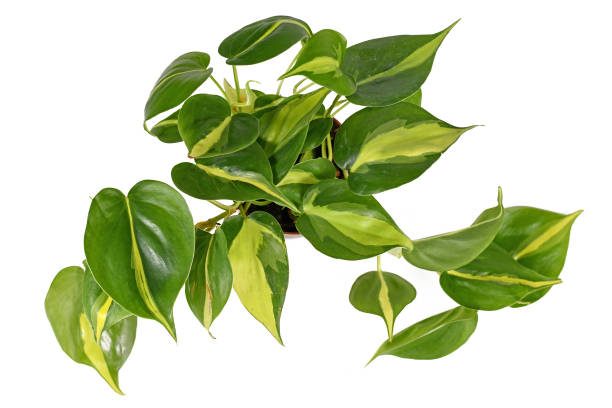
The Philodendron ‘Brasil’ is a popular variegated heartleaf Philodendron cultivar with lemon and lime green variegated heart-shaped leaves that contrast with the pinkish-green stems. This fast-growing vining plant is often used as a hanging basket plant due to its unique appearance. The heartleaf Philodendron is a closely related species with similar leaf shape.
The Philodendron ‘Brasil’ can tolerate low to medium light but will benefit from bright light to maintain its vibrant foliage. It is easy to care for and only requires moderate watering when the soil is slightly dry. To promote dense branching and prevent leggy growth, pruning is recommended for this climbing plant.
There are also rare variations of the Philodendron ‘Brasil’ with yellow, green, and creamy-white variegation, which are referred to as “cream splash Philodendron” online. However, these cultivars are challenging to find.
Philodendron Micans (Philodendron Hederaceum Micans)
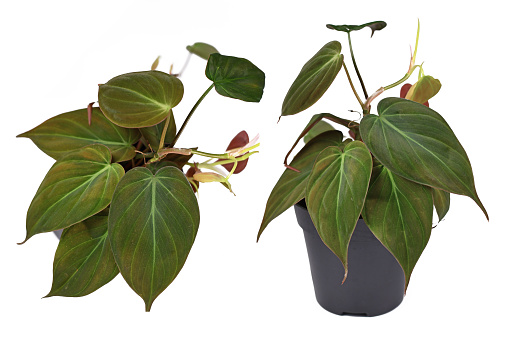
The velvet-leaf Philodendron is a stunning trailing plant that has heart-shaped leaves with a velvet texture. It is also known as the Philodendron micans due to its iridescent foliage that can appear in shades of dark green, light green, or bronze, depending on the lighting conditions. As the plant matures, the leaves may also develop a pinkish-purple hue.
To grow the velvet-leaf Philodendron, it is recommended to place it in a hanging basket in bright, indirect sunlight. Direct sunlight can damage the plant’s foliage, causing it to wilt or become discolored. Without enough light, the trailing vines may grow spindly and lack lush foliage. It is important to keep the soil evenly moist, but not waterlogged, to prevent root rot. Fertilize the plant every 2-3 months to encourage healthy growth.
Philodendron Xanadu (Philodendron bipinnatifidum)
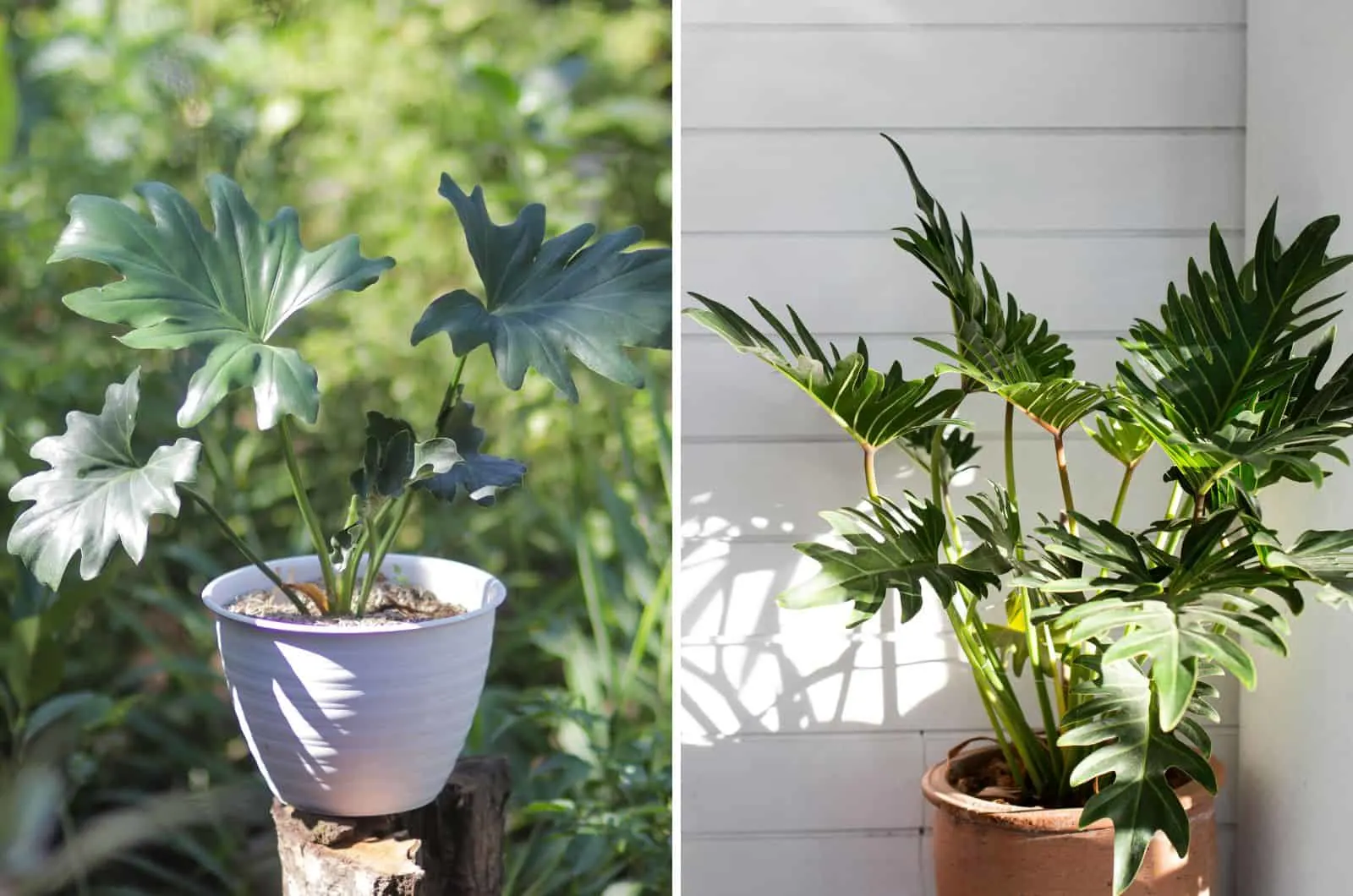
The Xanadu cultivar is a type of Philodendron plant that has large, split leaves with deep lobes. Unlike other Philodendron plants, it does not climb, but forms dense clumps. It is also known as Winterbourn and can reach a height of up to 3 feet (1 metre) and a width of 6 feet (2 metres) when grown outdoors.
As an indoor plant, the growth of Xanadu depends on the size of the container. It grows slowly compared to other fast-growing Philodendron climbers. Xanadu is a great option as a floor plant or displayed in a planter due to its mound shape. It needs medium to bright light to thrive and its large, glossy green lobed leaves add a touch of brightness to any room.
Philodendron Pink Princess (Philodendron Erubescens)
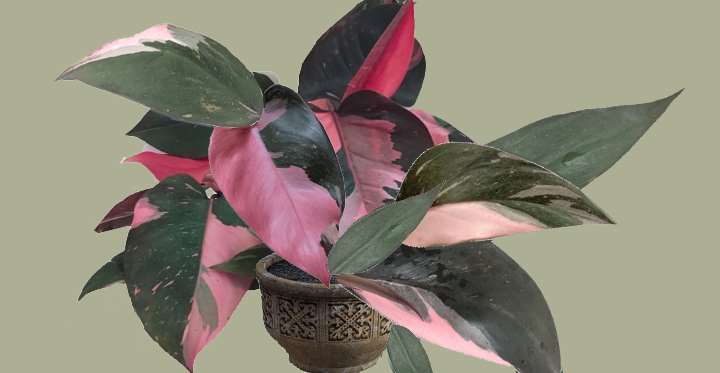
The Philodendron Pink Princess is a stunning indoor plant with variegated leaves in shades of green and pink. Despite being a vine plant, regular pruning can help maintain its bushy appearance. The plant is characterized by its unique crimson stems and heart-shaped leaves, which have a reddish underside.
While most Philodendron plants are relatively easy to care for, the Pink Princess requires specific conditions to thrive. It is sensitive to cold and requires bright, indirect sunlight to maintain the vibrancy of its leaves. It’s important to check the label before purchasing a pink Philodendron, as some varieties labeled as ‘Pink Congo’ or ‘Cream Congo’ have artificially colored leaves that will fade back to green after a few months. The genuine Pink Princess, however, has a leaf variegation that will last as long as the plant lives.
Lacy Tree Philodendron (Philodendron selloum)

The Lacy Tree Philodendron, also known as Philodendron Selloum, is an upright tree that shares similarities with the Xanadu plant in terms of wide, deeply lobed leaves. However, the Xanadu plant is a cultivar of this species, whereas the Lacy Tree Philodendron is not. The leaves of the Lacy Tree Philodendron are also big, glossy, and waxy. As the plant ages, its leaves grow larger and start to droop. This upright plant can grow up to 3 feet (1 meter) tall and 6 feet (2 meters) wide, so it requires a lot of space to grow. The Lacy Tree Philodendron goes by various names, such as split-leaf Philodendron, Horsehead Philodendron, Cut-Leaf Philodendron, and Fiddle-leaf Philodendron.
Naugahyde Philodendron (Rugosum Philodendron)
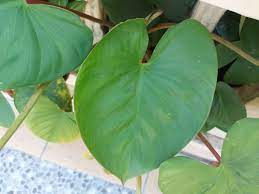
The Philodendron Rugosum is a unique plant known as the pigskin plant due to its thick and leathery leaves. Its dark green, heart-shaped leaves have intricate patterns that make it a popular choice for plant enthusiasts. Its foliage also gives off a plastic-like appearance from afar.
One of the distinguishing features of this plant from the Araceae family is its exceptionally large leaves. This variety of Philodendron is uncommon and not often found in garden centers or online.
Blushing Philodendron (Philodendron erubescens)

The Philodendron Blushing is a cultivar of the same species as the Pink Princess plant, and it has striking crimson stems. Its glossy, arrowhead or elongated heart-shaped foliage is a distinguishing feature of this Philodendron variant. The reddish-purple underside of the leaves gives them a “blushing” appearance, which is where the name comes from. Another name for this evergreen climber is the Red-Leaf Philodendron.
To create height and beauty in any space, consider hanging baskets or climbing plants for large-leafed Philodendrons with long trailing stems.
Philodendron ‘Moonlight’
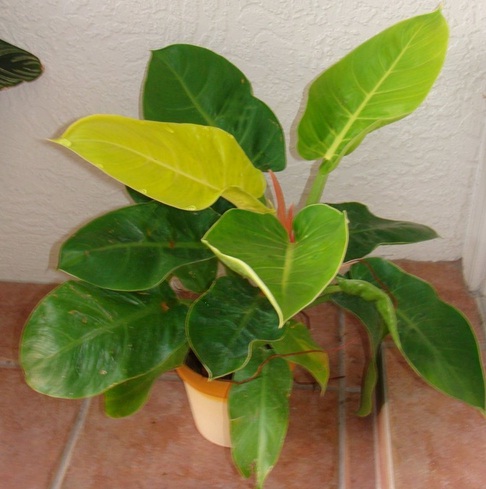
The Philodendron Moonlight is a type of non-vining Philodendron cultivar that grows in clumps and has vibrant, lime-green leaves. This plant can add a pop of fluorescent green to any dark corner of a room. The leaves start off as bright yellow when new and gradually darken as they age. In comparison to other Philodendron varieties, this cultivar is notably bright.
For indoor growth, the best environment for a Philodendron is a bright windowsill that is shaded from direct sunlight. East or west-facing windowsills are ideal for this purpose. Even in low-light conditions, the Philodendron can thrive, but the brightness of its leaves may fade over time.
Philodendron ‘Congo Rojo’
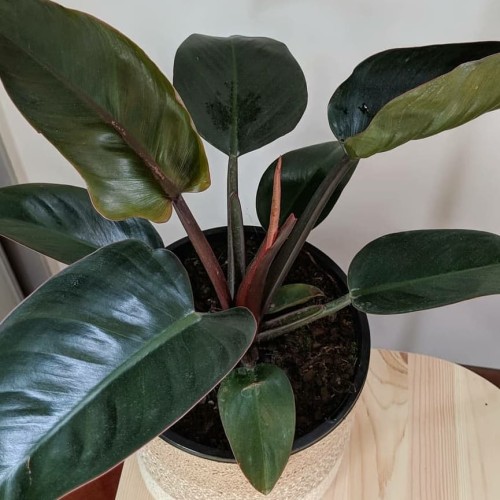
The Philodendron ‘Congo Rojo’ is a cultivar of Philodendron with elongated oval-shaped leaves in various shades of crimson, burgundy, and dark green. This type of plant thrives in hot climates and has unique characteristics that are distinct from other Philodendron plants. The Congo Rojo can only be grown indoors in temperate climates, while tropical and subtropical climates are suitable for outdoor growth.
Although not a rare variety, finding it in garden centers may be challenging. Unlike climbing plants, this plant does not have long trailing vines. The sturdy burgundy stems produce larger leaves, creating a bushy, shrub-like appearance instead of a tree-like one.
Philodendron Grazielae
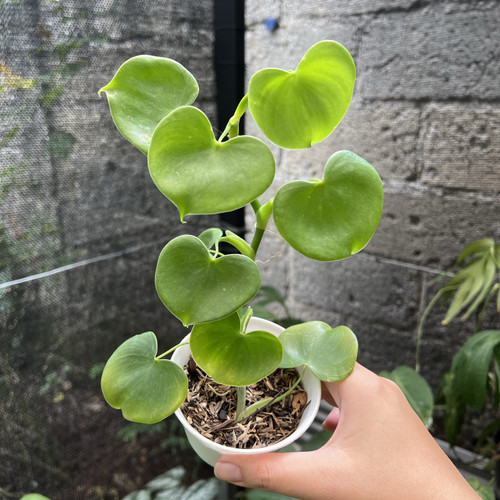
Philodendron Grazielae is an attractive and unique species of Philodendron with trailing vines that are ideal for hanging baskets or climbing moss poles. The plant has thick stems and glossy heart-shaped leaves that make it stand out from other houseplants. Philodendron Grazielae can be grown in pots and pruned regularly to maintain its bushy appearance. Its trailing vines make it an excellent choice for brightening up dull spaces, whether it’s placed in a hanging basket or a corner of a room or office.
Philodendron Prince of Orange
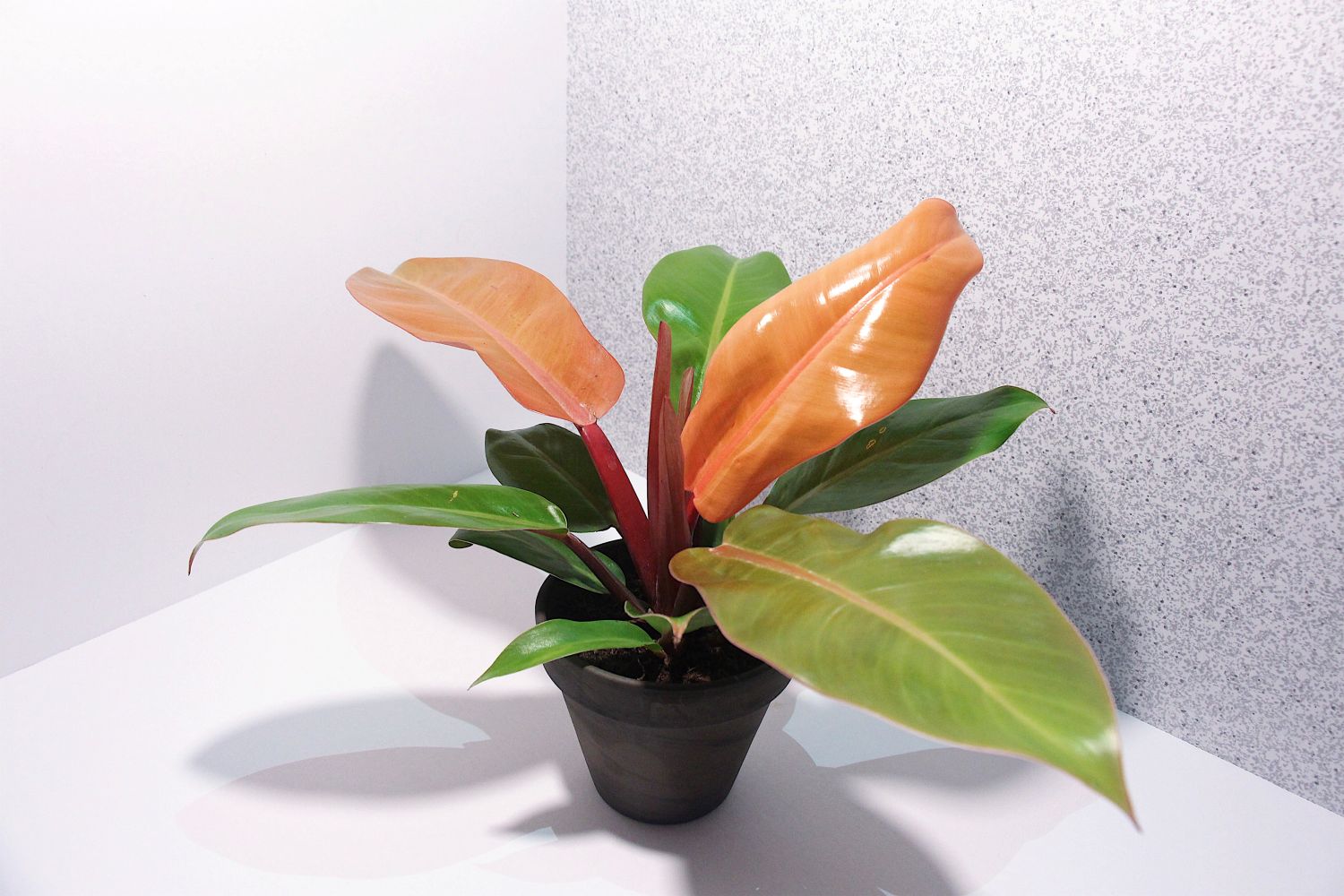
The Philodendron ‘Prince of Orange’ is a unique cultivar with large coppery-orange leaves, hence its name. As the leaves mature, they darken in color, adding to the plant’s stunning appearance. This non-climbing plant has pointed leaves in various shades that grow together, creating a beautiful contrast.
To grow the Prince of Orange Philodendron, place it in a bright spot away from direct sunlight. This upright plant can reach a height of up to 2 feet (60 cm).
Philodendron Gloriosum

Philodendron gloriosum is a large plant species characterized by dark green leaves with white or pinkish veins. Its leaves are huge and velvety green. As a crawling variety of Philodendron, it features large heart-shaped leaves in a dark green color with pinkish borders and faint green, white, or pinkish veins.
Growing Philodendron gloriosum indoors requires ample space due to the heart-shaped leaves, which can grow up to 3 feet (90 cm) tall, and thick woody stems that appear to arch in various directions. It prefers shaded or partially shaded areas for optimal growth. Like all Philodendron plants, it is essential to keep the soil moist but not overwatered.
Philodendron Birkin
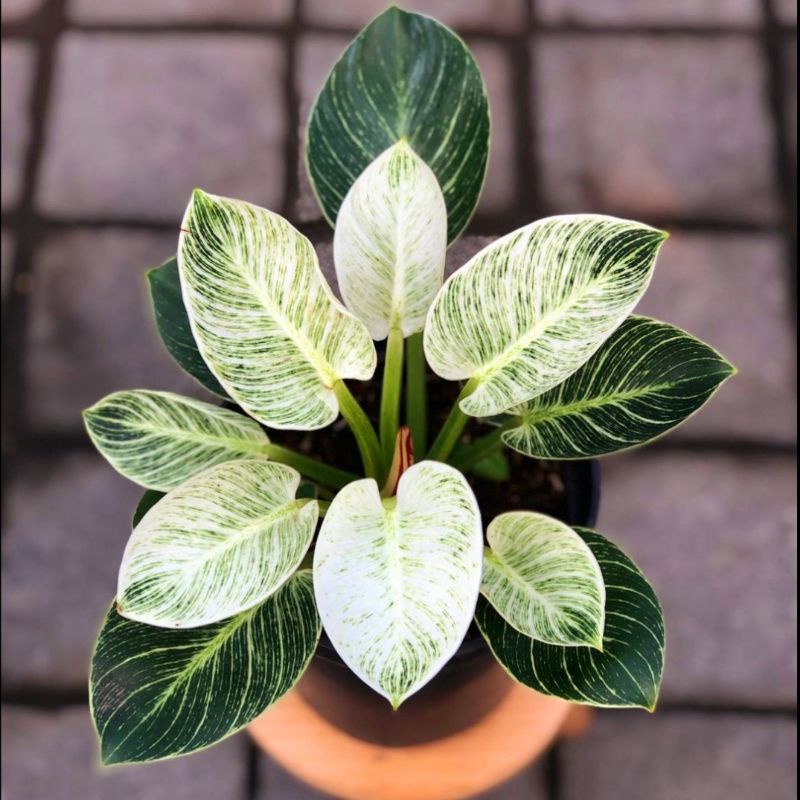
The Philodendron Birkin is a beautiful and rare species of philodendron with dark, leathery, and glossy leaves. Its unique name comes from its heart-shaped leaves, which have delicate cream-white pinstripes. The variegation pattern is not consistent and can differ from leaf to leaf, making each Birkin plant unique.
To care for the Philodendron Birkin, it requires indirect sunlight, well-draining soil, and high humidity. The ideal temperature range for growing the Birkin plant is between 60°F and 75°F (18°C – 24°C). The Birkin plant grows upward and can reach a maximum height of about 3 feet (1 metre) after a few years. It is a fast-growing plant and can add a beautiful touch to any indoor space.
Philodendron Atabapoense

The Philodendron Atabapoense is a plant species from South America that thrives in the Amazon rainforest. This climbing plant is known for its large, glossy, heart-shaped leaves and its ability to climb trees using aerial roots. Due to its attractive foliage and low-maintenance requirements, it is a popular choice as a houseplant, and it is also favored by plant collectors and enthusiasts.
Philodendron Bernardopazii
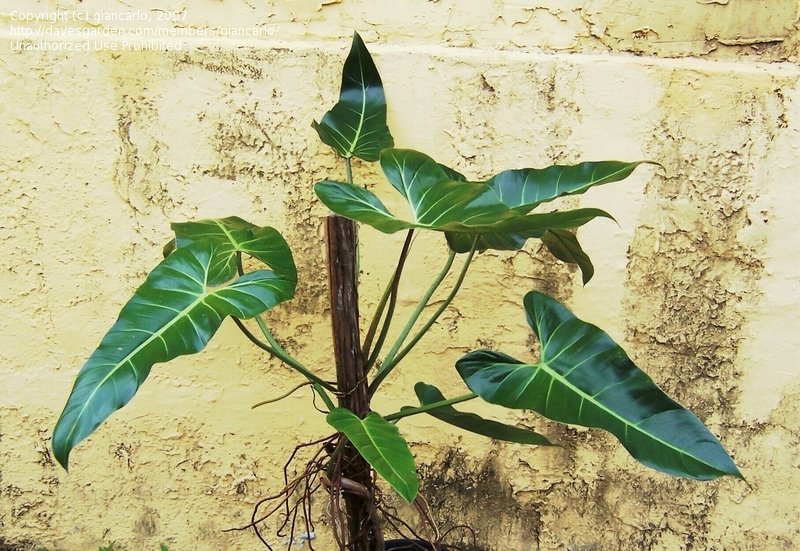
The Philodendron genus is a group of flowering plants belonging to the Araceae family. With 489 accepted species as of September 2015, it is the second-largest genus in the family after Anthurium. However, the taxonomic understanding of the Philodendron genus is still incomplete, and there may be many undescribed species. The name “Philodendron” comes from the Greek words “philo,” meaning love or affection, and “dendron,” meaning tree. Philodendrons are often grown as houseplants due to their attractive foliage and ease of care.
Philodendron Billietiae

Philodendron billietiae is a plant native to Brazil, Guyana, and French Guiana that grows as a hemi-epiphyte. It was discovered in 1995 and has distinctive orange-yellow petioles and wavy, ridged leaf edges.
Philodendron Bipennifolium

Philodendron Bipennifolium is a plant species belonging to the Philodendron genus, which grows as an epiphyte in the tropical regions of Central and South America. The plant has large, glossy, deeply-lobed leaves, and is known for its ability to climb trees using its aerial roots. As a result of its attractive foliage and low-maintenance care, it is a popular houseplant, and is also sought after by plant collectors and enthusiasts.
Philodendron Black Cardinal
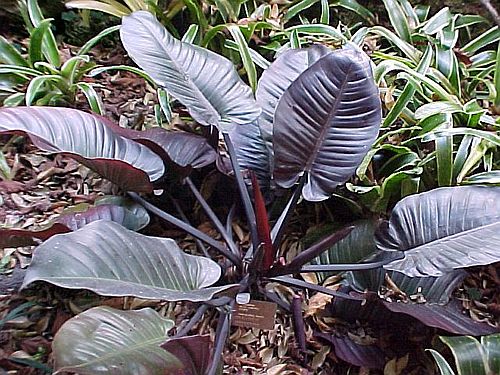
The Philodendron genus belongs to the family Araceae and is known for its diverse range of flowering plants. As of September 2015, the World Checklist of Selected Plant Families recognizes 489 species of Philodendron. The genus is second in size to Anthurium in the Araceae family, regardless of the number of species. Taxonomically, the genus Philodendron is still not fully understood, and many species remain undescribed. Many of these plants are popular indoor plants used for decoration. The word Philo-dendron comes from the Greek words “love, attraction,” and “tree,” respectively. The English name for the genus Philodendron is commonly used.
Philodendron Bob Cee

Philodendron Bob Cee is a large-sized plant from the Aroid family with saw-toothed shaped leaves that are lush green. Its foliage grows quickly, making it a spectacular addition to any collection. This rare specimen is becoming increasingly popular in the Aroid world and is highly sought after by collectors.
The Philodendron Bob Cee can reach a massive size with leaves that can grow up to 1.2 meters long. If allowed to grow, it will attain this magnificent size. The Brass Plant Support is an ideal starter trellis for this Philodendron!
Not only is the Phlodendron Bob Cee visually stunning, but it’s also very easy to care for, making it ideal for beginners. Philodendrons are highly adaptable to varying light and water conditions, making them very forgiving. They are perfect for low-light corners and will forgive you if you forget to water them. As a result, they are a great choice for both novice and experienced plant parents.
Philodendron Brandtianum

Philodendron Brandtianum is a species of plant belonging to the genus Philodendron. It grows naturally as a terrestrial plant in the tropical regions of Central and South America, thriving in damp and shaded environments, such as rainforests. Its large, glossy leaves and ability to climb trees with the help of aerial roots are well-known traits of this plant. Due to its appealing leaves and easy care requirements, it is commonly grown as an indoor plant. Plant collectors and enthusiasts are also attracted to this plant.
Philodendron Burle Marx

Philodendron Burle Marx is a species of plant belonging to the Philodendron genus. It is found growing as an epiphyte in the tropical regions of South America, and is known for its large, glossy, deeply-lobed leaves that can climb to great heights using its aerial roots. This plant is often grown as a houseplant due to its beautiful leaves and easy maintenance. Plant enthusiasts and collectors also appreciate its unique qualities. The plant is named after Roberto Burle Marx, a renowned Brazilian landscape architect who worked extensively with native flora to preserve Brazil’s natural ecosystems.
Philodendron Callosum

Philodendron Callosum is a species of the Philodendron genus that grows as a ground plant in the tropical regions of South and Central America. Its big, glossy, and heart-shaped leaves, as well as its ability to climb trees using aerial roots, are well-known features. Due to its attractive foliage and easy maintenance, it is frequently grown as an indoor plant. Philodendron enthusiasts and collectors are fond of it. The plant’s specific epithet “Callosum” refers to its thick and leathery leaves.
Philodendron Camposportoanum

Philodendron camposportoanum is a small species of philodendron with unique characteristics. Its juvenile leaves are dark and velvety, while new leaves have an orange-blush color. As it grows, the leaves become heart-shaped with large, dramatic back lobes, giving the plant a trilobed appearance. At any given time, the plant has 2-3 different leaf shapes, making it even more interesting.
Philodendron Dark Lord

Philodendron Dark Lord is a distinctive plant with small black leaves and a deep crimson underside that can be appreciated from any angle. It’s a relatively low-maintenance plant that produces large triangular-shaped leaves. The plant has sturdy reddish stems that can grow to over 2cm in diameter. When purchasing the plant, only the plant itself is included, without any mention of the planter or pot.
Philodendron Florida Ghost

Philodendron Florida Ghost Plant is a hybrid of philodendrons that was recently created by crossing Philodendron Squamiferum and Philodendron Pedatum. The plant belongs to the Araceae family, which is known for its flowering plants. Philodendron is the second-largest genus in this family, with 489 known species.
Philodendron Hastatum

Philodendron Hastatum is a plant species that belongs to the Philodendron genus. It grows as an epiphyte on trees in the tropical regions of Central and South America, attaching itself with its aerial roots. It is known for its large, broad, glossy, and deeply-lobed leaves, which allow it to climb to great heights. It is a popular houseplant due to its attractive foliage and easy-to-care-for nature. Plant collectors and enthusiasts also admire it. The plant’s specific epithet “Hastatum” describes its sword-shaped leaves.
Philodendron Hope Selloum

Philodendron Bipinnatifidum, also known as Philodendron Hope Selloum, is a tropical plant indigenous to South America and belongs to the Araceae family, which encompasses the Philodendron genus. This genus is large and varied. The Philodendron Hope Selloum is a large and spreading plant with deeply lobed, dark green leaves and a strong growth habit. In warm, humid climates, it is commonly used as a landscaping plant and can also be grown in containers. It is very easy to care for and can adapt to a wide range of growing conditions. However, like other poisonous substances, it can be harmful to pets and young children if ingested.
Philodendron Imperial Green

Philodendron Imperial Green is a popular plant species in the Philodendron genus that originates from the Americas. It is a large, robust plant with glossy, dark green leaves and a vigorous growth habit that makes it a great choice for landscaping in warm, humid regions. Additionally, it can be kept indoors in pots. Like other Philodendrons, it is low-maintenance and can thrive in a variety of environments. However, it’s important to note that it can be harmful to dogs and children if ingested, so it should be kept out of reach.
Philodendron Joepii

Philodendron Joepii was discovered by Joep Moonen in 1991. The plant’s peculiar three-lobed green leaves with a broad bottom lobe and thin, pointed upper lobes were initially thought to have been damaged by insects, but it turned out to be a unique characteristic of the plant. The exact parentage of Philodendron Joepii is uncertain, but it is believed to be a natural hybrid between Philodendron bipennifolium and Philodendron pedatum, according to Moonen. Philodendron Joepii is an extremely rare plant, with only two known plants in their natural habitat, making it virtually extinct. It is a small plant, measuring 35cm in height, and is typically sold in a 10cm pot.
Philodendron Jose Buono

If you are a fan of large variegated leaves, then Philodendron White Knight is the perfect plant for you. This plant has beautiful white variegation spots covering its entire body. The plant grows rapidly and can reach a significant size. Philodendron White Knight thrives both indoors and outdoors in warmer climates. Its enormous paddle-shaped leaves with striking variegation are a sight to behold. The leaves of the plants listed are typically around 6 inches long.
Philodendron Lacerum

Philodendron Lacerum is a tropical plant belonging to the Philodendron genus, native to the Americas. This plant has a vigorous growth pattern, with big, glossy, dark green leaves. It is often used as a landscaping plant in warm, humid regions and can also be grown indoors in pots. The Philodendron Lacerum is known for its ability to thrive in a variety of environments and requires minimal maintenance, similar to other Philodendrons. However, it can be harmful if ingested by pets or children, so it should be kept out of their reach.
Philodendron Majesty

Philodendron Majesty is a tropical plant from the Philodendron genus, which is native to the Americas. It has large, spreading foliage with shiny, dark green leaves and a fast growth habit. It’s often used as a landscape plant in warm, humid environments and can also be grown indoors in containers. Like other Philodendrons, it’s easy to care for and can tolerate a wide range of growing conditions. However, it can be harmful if ingested by pets or children, so precautions should be taken to keep it out of reach.
Philodendron Mamei

Philodendron Mamei is a tropical plant that belongs to the Philodendron genus and is indigenous to the Americas. It is a large, sprawling plant with shiny, dark green leaves and a quick growth habit. It is often used as a landscape plant in warm, humid environments and can also be grown indoors in containers. Like other Philodendrons, it is low-maintenance and can withstand a wide range of growing conditions. However, it can be harmful to pets and children if ingested, so care should be taken to keep it out of their reach.
Philodendron Mayoi

Philodendron Mayoi is a beautiful plant that features deeply divided leaves and a vivid green color. The leaves have a mounding growth pattern and cascade in a semi-cascading manner. The glossy, rubbery leaves are lobed, with four to six lobes on each side of the blade, resembling palm leaves.
Philodendron Melanochrysum

Philodendron Melanochrysum, a tropical plant belonging to the Philodendron genus, is native to the Americas. It has glossy, dark green leaves and a fast-growing habit, making it a popular landscape plant in warm, humid climates. It can also be grown indoors in containers. Like other Philodendrons, it is low-maintenance and can tolerate a wide range of conditions. However, it can be harmful to dogs and children if ingested, so it’s important to keep it out of reach.
Philodendron Melanoneuron

Philodendron Melanoneuron is a tropical plant belonging to the Philodendron genus, which is indigenous to the Americas. With its glossy, dark green leaves and vigorous growth pattern, it’s a wide-spreading plant that is commonly used as a landscape plant in warm, humid environments, as well as being suitable for indoor container cultivation. It is known for its ability to thrive in various environments and for its low-maintenance requirements, much like other Philodendrons. Nonetheless, it can be hazardous to pets and children if ingested, so keep it out of their reach.
Philodendron Mexicanum

Philodendron Mexicanum is a tropical plant that belongs to the Philodendron genus native to the Americas. With its glossy, dark green leaves and rapid growth, it is a large and spreading plant. In warm and humid climates, it is frequently used as a landscaping plant, as well as indoors in pots. Philodendron Mexicanum is known for its ability to adapt to various growing conditions and its low maintenance requirements, similar to other Philodendrons. However, it may be harmful to pets and children if ingested, so precautions should be taken to keep it out of reach.
Philodendron Painted Lady

Philodendron Painted Lady is a tropical plant belonging to the Philodendron genus which is native to the Americas. This plant has large, glossy, dark green leaves and a robust growth habit. It is commonly used as a landscape plant in warm, humid environments and can also be grown indoors in pots. Similar to other Philodendrons, it is known for its adaptability to various growing conditions and is relatively low-maintenance. However, it can be harmful to both pets and children if ingested, so it’s essential to keep it out of their reach.
Philodendron Paraiso Verde

Philodendron Paraiso Verde is a tropical plant belonging to the Philodendron genus, which is native to the Americas. It is a large, spreading plant with glossy, dark green leaves and a strong growth habit. It is often used as a landscaping plant in warm, humid regions and can be grown in pots indoors. Philodendron Paraiso Verde, like other Philodendrons, is known for its hardiness and low-maintenance requirements. It is capable of thriving in a variety of growing conditions. However, if ingested, it can be harmful to both pets and children, so it is important to keep it out of their reach.
Philodendron Pastazanum

Philodendron Paraiso Verde is a tropical plant belonging to the Philodendron genus, which is native to the Americas. It is a large, spreading plant with glossy, dark green leaves and a strong growth habit. It is often used as a landscaping plant in warm, humid regions and can be grown in pots indoors. Philodendron Paraiso Verde, like other Philodendrons, is known for its hardiness and low-maintenance requirements. It is capable of thriving in a variety of growing conditions. However, if ingested, it can be harmful to both pets and children, so it is important to keep it out of their reach.
Philodendron Patriciae

Philodendron Patriciae is a tropical plant that belongs to the Philodendron genus, which is native to the Americas. This plant has a robust growth pattern and glossy, dark green leaves. It is often used as a landscape plant in warm, humid environments and can also be grown indoors in containers. Philodendron Patriciae is known for its ability to thrive in a wide range of environments and its low-maintenance requirements, like other Philodendrons. However, it should be kept out of reach of children and pets as ingestion can be harmful to them.
Philodendron Pedatum

Philodendron Pedatum is a tropical plant that belongs to the Philodendron genus, which is native to the Americas. It is a large, spreading plant with shiny, dark green leaves and a fast growth rate. It is often used as a landscaping plant in warm, humid regions and can be grown indoors in containers. Philodendron Pedatum is known for its ability to adapt to a wide range of growing conditions, making it a low-maintenance plant like other Philodendrons. However, it can be harmful if ingested by pets or children, so be sure to keep it out of their reach.
Philodendron Plowmanii
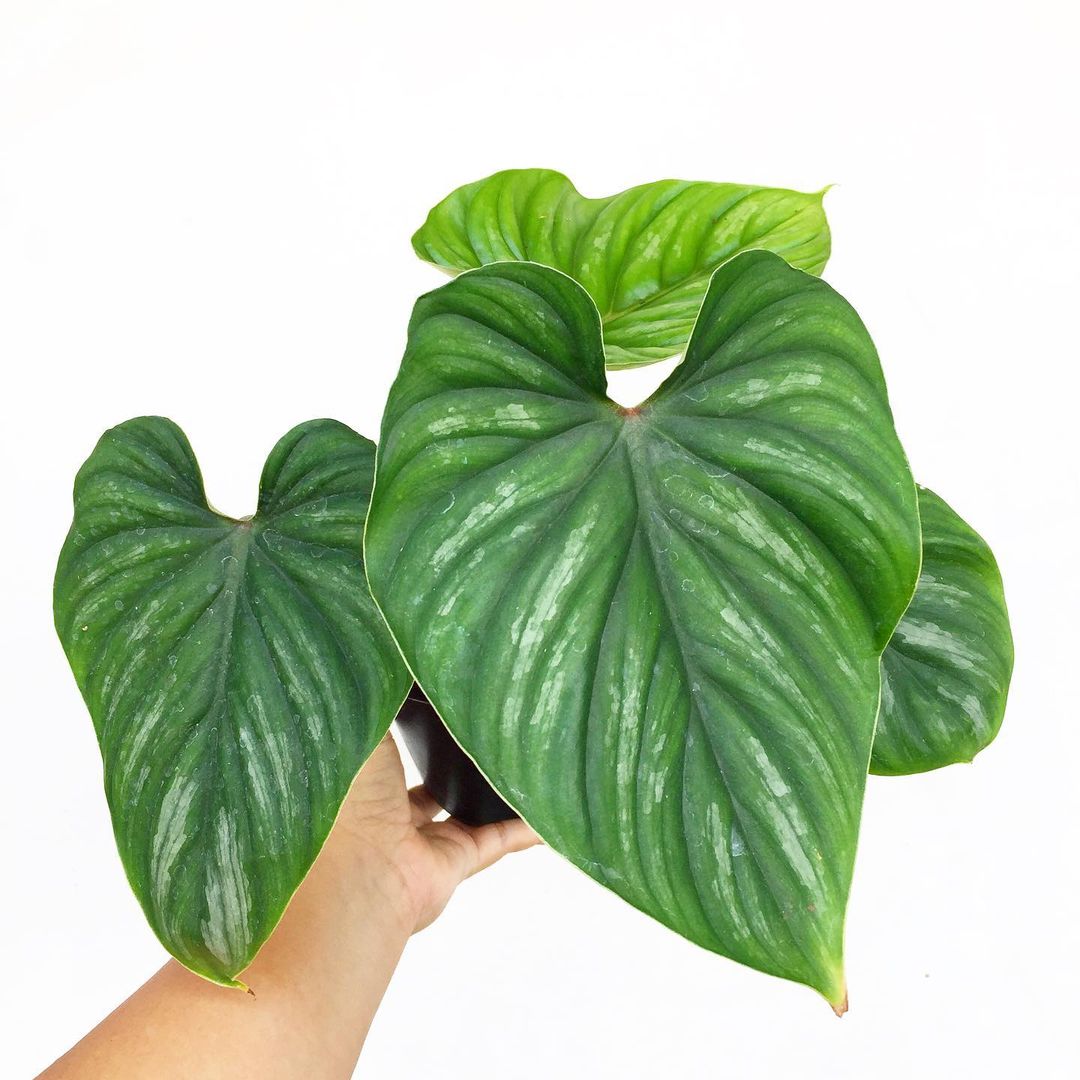
The Philodendron Plowmanii is a tropical plant that belongs to the Philodendron genus, which is native to the Americas. It has glossy, dark green leaves and a vigorous growth habit, making it a popular choice as a landscape plant in warm and humid regions. It is also suitable for indoor cultivation in containers due to its low maintenance requirements and adaptability to different growing conditions. However, it is essential to keep it out of reach of pets and children as ingestion can be harmful.
Philodendron Red Congo

Philodendron Red Congo is a tropical plant belonging to the Philodendron genus, which is found throughout the Americas. It is a large, spreading plant with glossy, dark green leaves and a fast growth rate. It is commonly used as a landscape plant in warm, humid climates and can also be grown indoors in containers. Like other Philodendrons, it is known for its ability to tolerate a wide range of environments and is low-maintenance. However, it can be harmful to pets and children if ingested, so it is important to keep it out of their reach.
Philodendron hederaceum ‘Rio’

Philodendron hederaceum is a tropical plant native to the Americas, and one of its cultivars is the Philodendron hederaceum ‘Rio.’ This large plant has shiny, dark green leaves and grows quickly. It is often used as a landscaping plant in warm, humid areas and can be grown indoors in containers. Like other Philodendrons, it is known for its ability to thrive in various environments and is relatively low-maintenance. However, it can be harmful to pets and children if ingested, so precautions should be taken to keep it out of their reach.
Philodendron Red Emerald

Philodendron Red Emerald is a tropical plant that belongs to the Philodendron genus, which is native to the Americas. It is a large, spreading plant with glossy, dark green leaves and a fast growth habit. It is frequently utilized as a landscape plant and can be grown in containers or outdoors in warm, humid environments. Like other Philodendrons, it can tolerate a wide range of growing conditions and is low-maintenance. However, it can be harmful if consumed by pets or children, so precautions should be taken to keep it out of their reach.
Rhaphidophora Tetrasperma

Rhaphidophora Tetrasperma is a tropical plant that originates from Southeast Asia and is part of the Araceae family, which is related to the Philodendron genus. This tiny climbing plant has heart-shaped leaves and a trailing growth habit. It can be trained to climb up a support or allowed to hang down from a pot or hanging basket, making it a popular choice for indoor gardening. Rhaphidophora Tetrasperma is a low-maintenance and highly adaptable plant that can thrive in a wide range of growing conditions. However, it can be harmful if ingested by pets or children, so it is important to keep it out of their reach.
Philodendron Ring of Fire

We adore the Philodendron Ring of Fire, with its uniquely serrated and multi-colored leaves, making it a striking and uncommon addition to any plant collection. Like other Philodendrons, this plant prefers moist, well-draining soil with some humidity, and it should be staked or trained to climb up moss poles as it grows. In higher humidity environments, the plant develops many aerial roots, contributing to its stunning appearance. Each plant is distinct due to the natural occurrence of variegation, which can vary from plant to plant and even from leaf to leaf on the same plant. Therefore, we cannot guarantee a specific degree of variegation in younger plants.
Philodendron Sharoniae

Philodendron Sharoniae is a tropical plant belonging to the Philodendron genus, which is native to the Americas. It is a large, robust plant with glossy, dark green leaves and a rapid growth habit. It is commonly used as a landscape plant in warm, humid regions and can be grown indoors in pots. As with other Philodendrons, it is known for its low-maintenance and ability to thrive in various growing conditions. However, if ingested, it can be harmful to both pets and children, so care should be taken to keep it out of their reach.
Philodendron Spiritus Sancti

If you are looking to grow this highly sought-after plant, it can be quite easy to care for given the right growing conditions. It requires a consistently moist but well-draining soil that is also airy. The soil should not be too dry or too wet. This philodendron prefers stable temperature and humidity levels and does not respond well to changes. To provide the best chance of survival, try to emulate its natural habitat.
The most common issue with this plant is root rot, which can be prevented by being cautious with watering and ensuring the soil is nutrient-rich. Spider mites and mealybugs are also common pests to watch out for.
Philodendron Squamiferum

Philodendron Squamiferum is a tropical plant that belongs to the Philodendron genus and is indigenous to the Americas. It’s a big, spreading plant with glossy, dark green leaves and a strong growth habit. It’s frequently utilized as a landscaping plant in warm, humid environments and can be grown indoors in containers as well. It is recognized for its capacity to thrive in a range of growing conditions and is relatively easy to maintain, much like other Philodendrons. However, it can be harmful if consumed by pets or children, so caution should be exercised.
Philodendron Subhastatum

Philodendron Subhastatum is a tropical plant that belongs to the Philodendron genus, which is native to the Americas. It is a large, spreading plant with glossy, dark green leaves and a strong growth habit. It is commonly used as a landscape plant in warm, humid environments and can also be cultivated in containers indoors. Like other Philodendrons, it is known for its ability to adapt to various growing conditions and is relatively low-maintenance. However, if ingested by pets or children, it can be toxic, so precautions should be taken to keep it out of their reach.
Philodendron Thai Sunrise

One of the most sought-after philodendrons nowadays is Philodendron Thai Sunrise Plants. The light and dark green colors of the leaves are 7 to 10 inches long. This plant is suited for indoor low-light settings. If given the necessary assistance, he’ll climb. 9-11 p.m. is the Growzone time.
Philodendron Tortum

Philodendron Tortum is a tropical plant belonging to the Philodendron genus and is native to the Americas. It has a large, sprawling growth pattern with glossy dark green leaves. Philodendron Tortum can be grown indoors in pots and is often used as a landscape plant in warm, humid climates. It is well-known for its ability to adapt to a wide range of growing environments and is relatively low-maintenance, much like other Philodendrons. However, if ingested, it can be harmful to pets and children, so it’s important to take precautions to keep it out of their reach.
Philodendron Tripartitum

Philodendron Tripartitum is a tropical plant belonging to the Philodendron genus, which is native to the Americas. This plant has large, glossy, dark green leaves and a fast growth rate. It is often used as a landscape plant in warm, humid climates, and it can also be grown indoors in terrariums. Like other Philodendrons, it is known for its ability to thrive in a variety of growing conditions and for its low-maintenance requirements. However, it can be harmful if ingested by pets or children, so it is important to take precautions to prevent access to the plant.
Philodendron Verrucosum

Philodendron Verrucosum is a tropical plant that belongs to the Philodendron genus, which is native to the Americas. It has glossy green leaves and a fast growth habit, making it a large, spreading plant. It is often grown indoors in containers and used as a landscape plant in warm, humid regions. Like other Philodendrons, it is known for its ability to thrive in a variety of conditions and is low-maintenance. However, it can be harmful if ingested by pets or children, so it is important to take precautions to keep it out of their reach.
Philodendron White Knight

The attractive climbing plant White Knight Philodendron is It has an easy-care nature and lovely, white-variegated foliage. Its leaf pattern makes it difficult to find, and it grows at a sluggish pace.
How to Care for Philodendrons
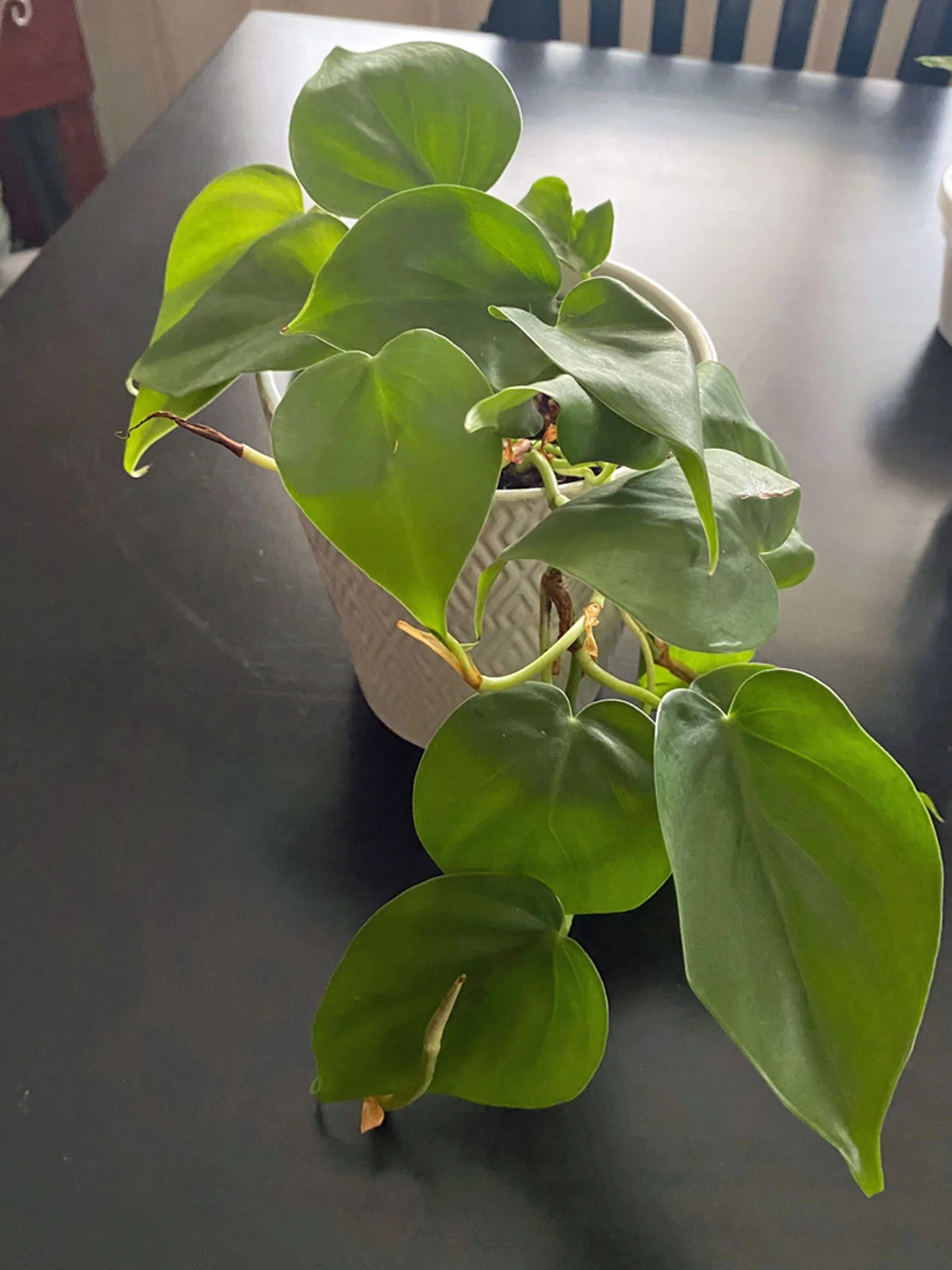
Philodendron plants are among the most simple to care for of all the houseplants available in a greenhouse. Plants that are suitable for low-light settings with high humidity, such as bathrooms, are known as varieties. Other Philodendron species require more intense illumination but are protected from direct sun.
Light requirements for growing Philodendrons
In medium to bright light, all types of Philodendron plants thrive. The most essential safeguard is to keep them out of the sun’s rays. In shaded areas, the darker-leafed varieties of Philodendron are ideal. Variegated Philodendron plants, on the other hand, need bright, filtered sunlight.
Soil mix for philodendrons in pots
To ensure the proper growth of Philodendron plants, it is recommended to use a potting mix that has good drainage but also retains some moisture. For indoor growing, a mixture of peat moss, perlite, and potting soil is ideal. The pot should have drainage holes to allow excess water to escape easily. When watering, the soil should be moist but not overly saturated.
How to water a Philodendron indoor plant
After the top layer of soil has dried out, water any type of Philodendron. Always thoroughly soak or drench the soil in order to water your green, leafy plant. The roots are kept constantly wet without becoming waterlogged with this deep watering technique. It’s also a good idea to wait until the soil is mostly dry before fungus gnats appear.
Temperature and humidity for indoor philodendrons
Maintaining a high level of humidity is crucial for Philodendron plants as they are native to subtropical and tropical regions. You can provide humidity by misting the leaves every day or placing the pot on a tray with water to increase humidity levels. Philodendrons thrive in temperatures between 65°F and 80°F (18°C and 27°C), so it’s important to keep the temperature consistent.
How to fertilize philodendrons
A balanced liquid fertilizer with micro and macro nutrients is the best type of fertilizer for indoor Philodendron plants. During the growing season (spring and summer), fertilize your Philodendron plants once a month. During the fall and winter, when growth slows, don’t fertilize.
